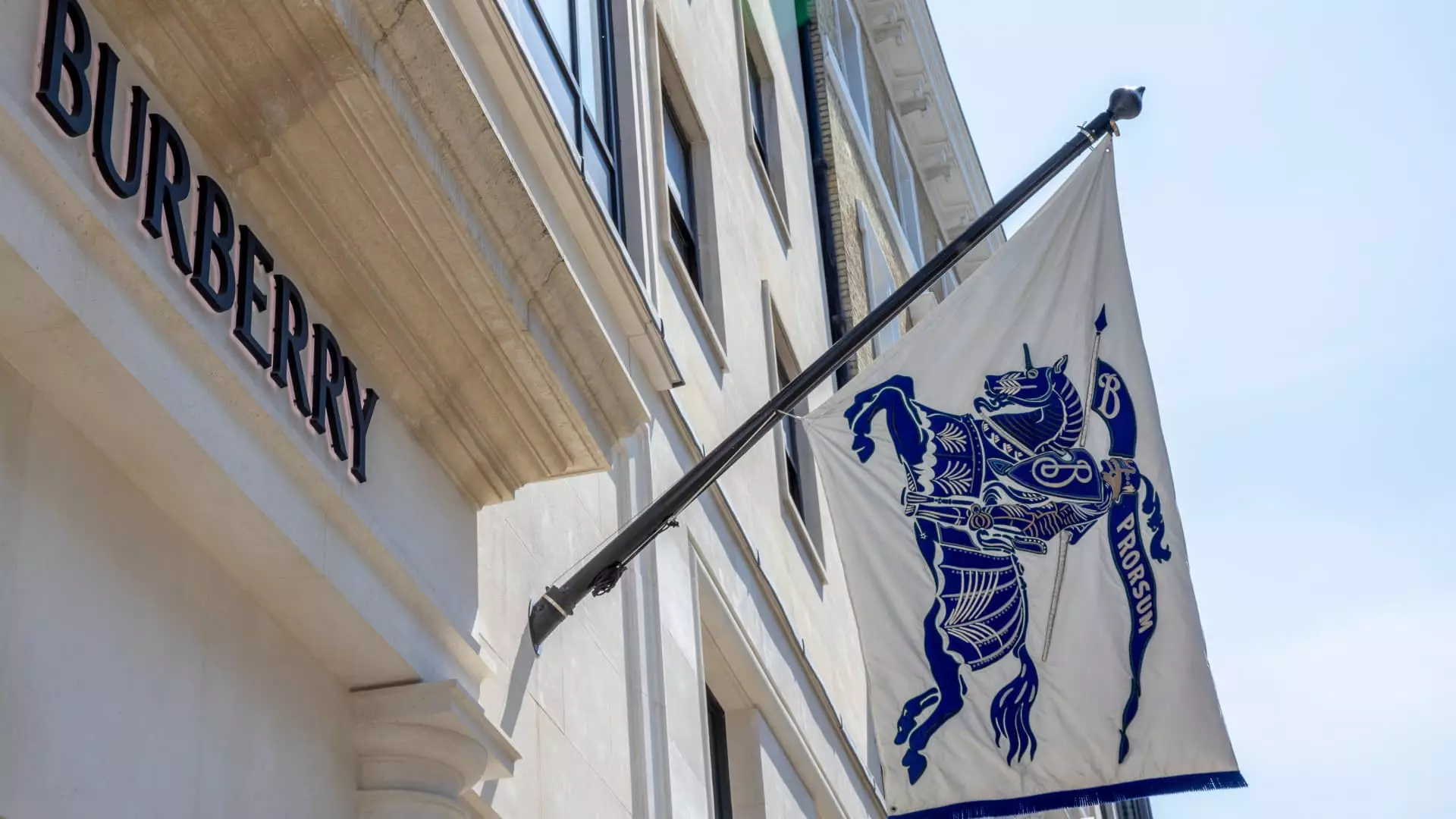Burberry, an iconic name in luxury fashion, is grappling with a plethora of challenges as they embark on a bold, yet troubling, organizational overhaul. Announced recently, the company disclosed a plan that could potentially alter the fate of around 1,700 employees globally in a bid to slash costs and stabilize its wavering sales figures. This drastic move epitomizes the struggles synonymous with legacy brands trying to adapt in an industry that evolves at lightning speed. The luxury sector, despite its glittering facade, is not immune to the harsh economic realities that are forcing even the most storied fashion houses to rethink their strategies.
Slipping Sales and Regional Setbacks
Burberry’s financial results reflect a narrative filled with disappointing outcomes. While sales dipped slightly less than analysts feared—down 6% instead of the anticipated 7%—this minor relief does little to mask the overarching trend of decline. Over the fiscal year, a more substantial 12% fall in sales underscores a worrying trajectory, especially given that a 13% drop was anticipated. The Asia-Pacific region’s downturn exemplifies a lost opportunity; what was once deemed a robust market is now struggling under the weight of geopolitical tensions and economic uncertainty. Ironically, the Americas, previously a beacon of hope, also succumbed to challenges, witnessing a 4% dip as the fiscal year closed, a stark reversal from earlier optimism.
The Management’s Dichotomy of Hope and Concern
Despite these dire circumstances, Burberry’s CEO, Joshua Schulman, has made an attempt to cushion the blow with a sprinkle of optimism. His belief that the luxury house can emerge victorious from this odyssey might ring hollow to those on the proverbial front lines—the employees and stakeholders grappling with the impending job losses. “Sustainable profitable growth over time,” as uttered by Schulman, sounds aspirational yet isn’t backed by concrete action plans. In an environment where consumer behavior is rapidly shifting, rosy predictions devoid of strategic depth may do more harm than good. Trust is hard to regain once it’s lost; Burberry’s historical credibility hangs in the balance.
The Geopolitical Factor: A Double-Edged Sword
The mention of geopolitical tensions adds another layer of complexity to Burberry’s challenges. Increased tariffs and uncertainty loom over the fashion industry like a dense fog, casting doubt on future planning and growth. The company’s lack of guidance on how these tariffs will affect its bottom line is troubling, revealing a potentially reactive rather than proactive management stance. In a sector where agility is paramount, being caught unprepared can spell disaster. The luxury market thrives on perception, and Burberry’s failure to anticipate these economic shifts could alienate a clientele that values not just products, but the stories behind them.
By choosing a path of workforce reduction and organizational restructuring, Burberry’s latest measures also risk diluting its brand identity—often defined by craftsmanship and heritage. The preservation of its legacy requires not only adaptation to changing markets but a reinvigoration of what makes the brand exceptional in the first place.
In this turbulent landscape, one question persists: will Burberry’s gamble on organizational overhaul truly lead them toward a renaissance, or will it lead to further disillusionment for both the brand and its loyal customers? Time will tell if the company can navigate these treacherous waters without losing the essence of what made it a luxury powerhouse.

